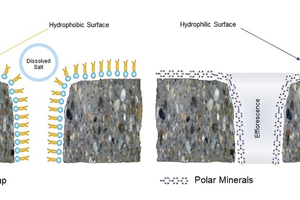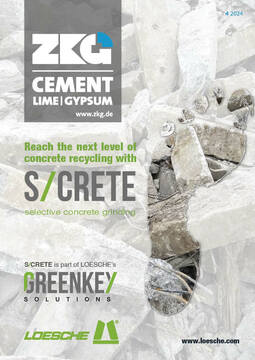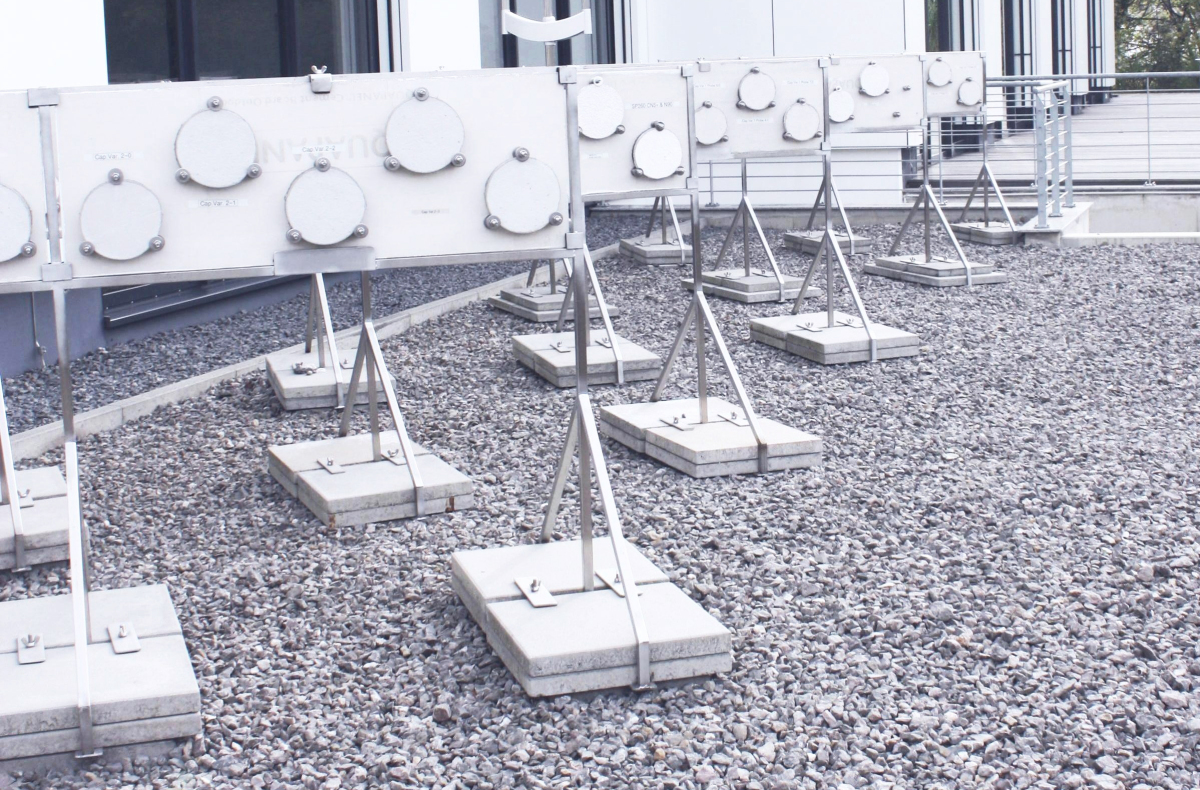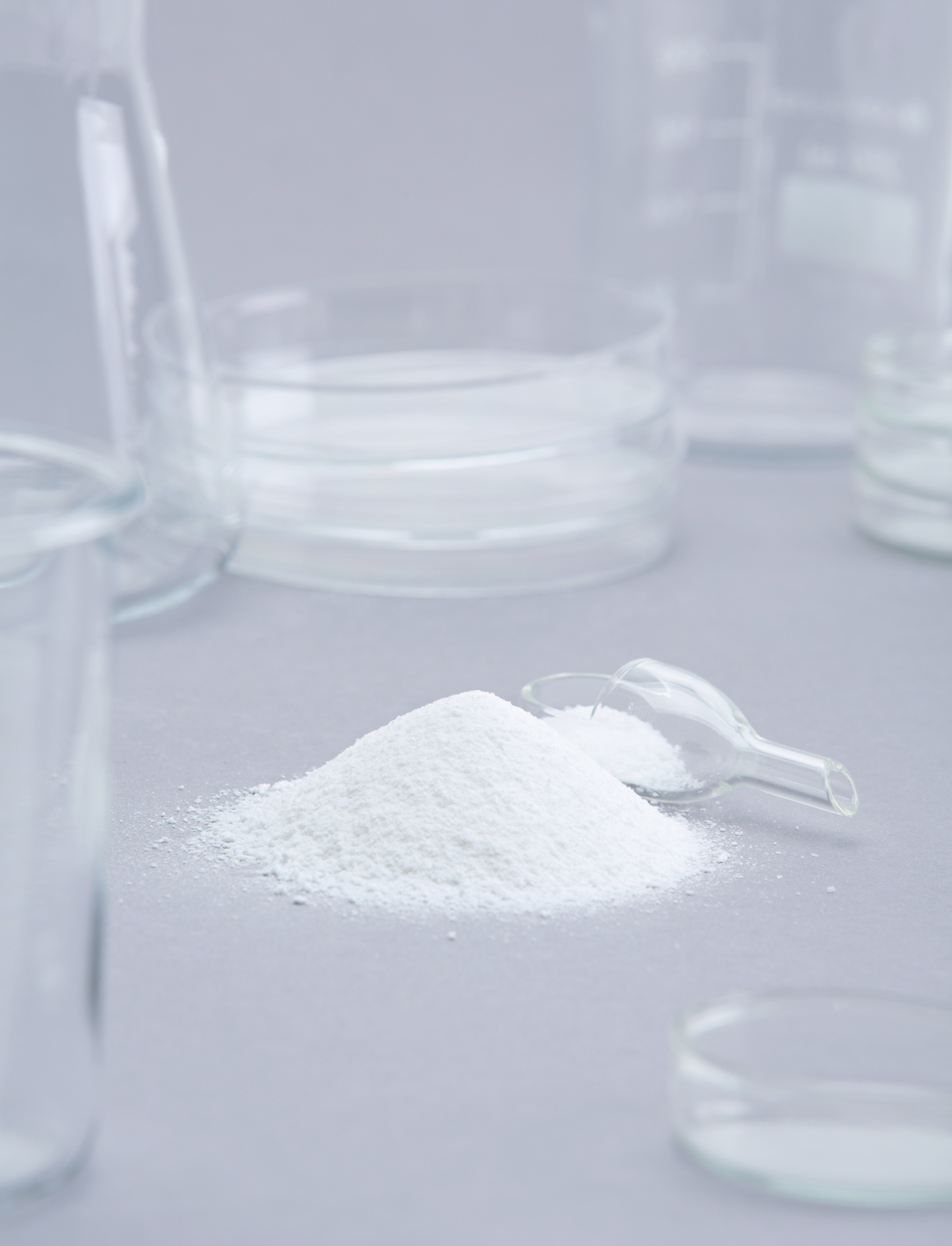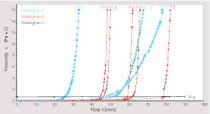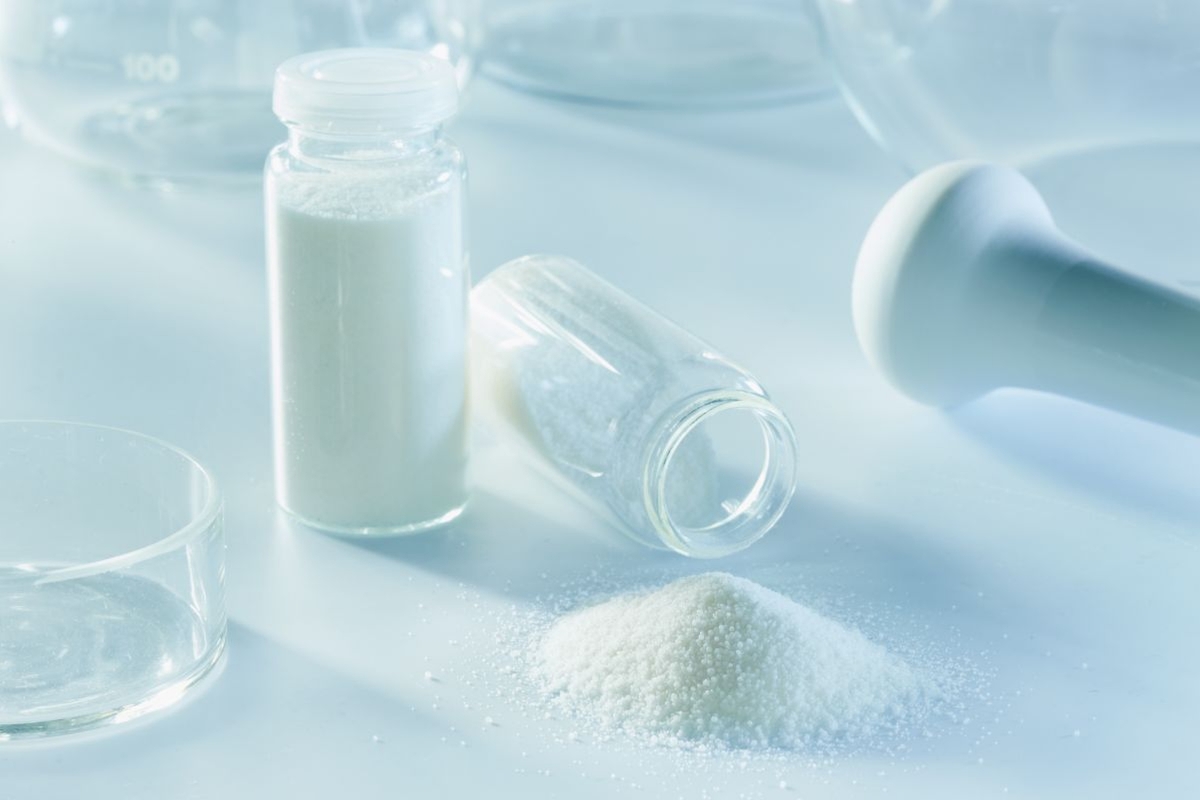Oleochemical Additives for Concrete Production
Concrete requires different hydrophobization than, for example, plaster or mortar. Mixing often takes place in liquid form which makes a liquid water repellent almost indispensable. Common reasons for using hydrophobing agents during concrete production are the reduction of carbonation processes, cold bridges, microorganism infestation and salt blasting as well as the prevention of cracks in the building fabric. Besides that, there are two major problems for concrete which can be solved with the right additives: Preventing attack of steel reinforcement and reducing efflorescence.
Water, especially salt water, can have an impact on concrete with steel reinforcement. Dissolved chloride ions, for example, can get in touch with the steel parts and cause corrosion. This disrupts the strength of the material and damages the structure. The best way to prevent this negative influence is to inhibit the absorption of water into the material. An additional benefit can be granted by using hydrophobing agents that also form a chloride ion barrier.
Efflorescence appears as an unwanted light-coloured salt film on the concrete surface. It can be classified as primary, secondary or tertiary. Primary efflorescence occurs during the drying process of concrete as water evaporates and leaves salts from inside the material at the surface. To prevent it, a salt barrier inside the building material is needed. Secondary efflorescence is caused by external water penetration, e.g. condensation or rain. When water is absorbed by the concrete it dissolves mineral components and deposits them on the surface after the evaporation. It can be prevented by limiting the absorption of water as much as possible. Tertiary efflorescence can occur, if the concrete is placed on a water absorbing ground, e.g. soil, while still being exposed to water penetration from the other side, e.g. condensation or rain. As a result, the material is attacked from different sides. Salts from the building material can be flushed to the surface by water coming from the ground as osmosis between the capillaries is even more stimulated than with primary or secondary efflorescence.
In order to prevent the negative effects mentioned above, impregnation, mass hydrophobization or the application of an external protective layer, e.g. paint, can be considered an appropriate solution.
Taking a closer look at mass hydrophobization, siloxanes, silanes, various types of waxes or oleochemicals are commonly used. When it comes to oleochemical hydrophobing agents, either alkaline soap solutions, metal soap dispersions or fatty acid suspensions can be considered. They are particularly suitable for use in concrete applications as they not only exhibit hydrophobing properties but also have a liquifying effect and thus lead to reduction of capillaries.
Alkaline soaps are hydrophilic and have surfactant properties due to the fatty acid anions formed in the aqueous solution. Their hydrophobing effect is generated by reaction with mineral components of the building material. Even after hardening, small quantities of free alkaline soaps are still present in the concrete. They get activated when in touch with water and create an active salt barrier by reacting with the salt component. Therefore, they are particularly suitable for primary and also some tertiary efflorescence.
Metal soaps exhibit strong hydrophobic properties. When mixed with water and building material, physical distribution is oriented towards the polar centres of the material. This orientation has an effect on the inner capillary walls and the surface. The coating of the capillary walls inhibits the osmotic process. The smoother surface changes the contact angle of water drops. Therefore, penetration of water is prevented and raindrops can run off. This kind of hydrophobization leads to the reduction of secondary efflorescence. It is also particularly suitable for hydrophobization of concrete with steel reinforcement as zinc stearate, besides its hydrophobing properties, is proven to act as a chloride barrier.
Fatty acids, such as stearic acid, are also very hydrophobic. Since they are acids, their molecules form hydrogen bonds among themselves and form a net-like structure. As this structure is mainly one-dimensional and oriented towards the polar centres, it provides excellent surface protection and blocks the capillaries. Due to the interruption of water transport through the capillaries, especially primary and tertiary efflorescence are reduced.
All three product groups are suitable mass hydrophobing agents but have different strengths, of course still depending on the concrete formulation: Metal soap dispersions excel with their strong hydrophobic properties while alkaline soaps are more suitable for impregnation or liquefaction and fatty acid suspensions are the best choice to prevent primary efflorescence. It is also possible to combine the individual product groups to create various synergy effects.


